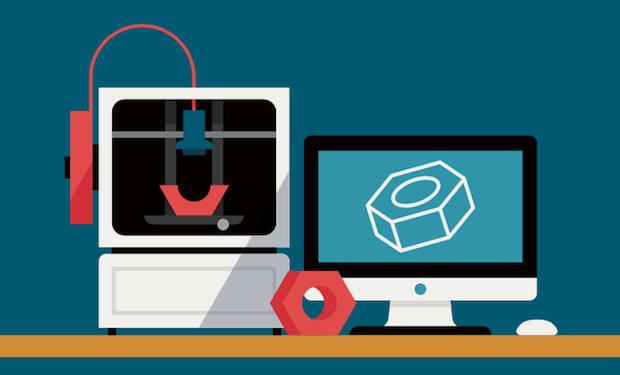As among the most revolutionary technologies to affect the manufacturing sector and the global supply network, 3D printing technology has got its name in the top evolved technologies. Many claim that the technology simply improves some facets of the manufacturing cycle, while others suggest that technology would revolutionize and substitute current operating systems. Either innovative or evolutionary, 3D printing technology is acknowledged as a significant development which will affect supply chains greatly. The aim of this paper is to address fundamental issues relating 3D printing technologies and the ways for modifying the production system and supply chain. For every emerging technological tool, AM production networks have problems that need to be tackled. Three main areas face challenges:

3D Printing in Engineering and technology
•Unique design criteria and load details for each particular AM system.
•Significant expenditure in technical education and system expertise is required
•Minor variations in material properties will hinder (sometimes) one-to-one substitution
•Comprehensive heat treatment and machining processes are currently at lower stages of mechanization
3D Printing and Management of data
•Long term regional or institutional differentiation between design and manufacturing entities requires safe shift of design which includes a development file, content specifications etc.•Prototype might only be produced on a licensed printer and must therefore be allowed to print the component
•Design and development data must be trackable to original demands.
3D Printing Impacts in business
•Local production provides substantial availability / lead time advantages for spare parts delivery compared with central printing•Enabling networks across decades of usage
•Preservation of intellectual property for concept and printing information
•Paves the way to alternative market models and operating modes
•Designs can be approved for printing by registered end users
Additive Manufacturing Model Advantages
Capital saving in 3D Printing:
• Capital reductions.
• Removes necessity of massive inventories
• Eradicate the need for large processing plants
• Decrease shipping costs
• Minimize overhaul fines
• Improve the efficiency of an economic lot
• More cost-effective and reliable packaging options
• Deliver unique prototypes at reduced expense
• Reduce manpower
Good time response of 3D Printing:
• Removes the time difference between designing and production
• Reduced production times
• Allowing production on requests.
• Enhancing operation efficiency
• Less use of intermediates in supply chain process
Improvement in Quality in 3D Printing:
• Minimize manufacturing waste
• Enhance performance
• Integrate consumer input
• Deliver efficient goods in several markets
• Remove drag-and-drop surplus components
• Ambiguity management of demand
3D Printing Impact on Environment:
• Fewer harmful environmental effects
• Eliminating greenhouse gas emissions
In the new world, 3D printing commences, specifically as a way of creating prototypes. The latest technical developments and 3D printing technologies indicate that the innovation has the ability to radically change other aspects of real life. AM's effect on supply chains has several forms, such as streamlined manufacturing techniques, decreased resource loss for leaner processing, improved efficiency, decreased expense, quicker demand responses, and flexible processing capacity. 3D printing also sets up fresh markets and has the opportunity of reducing prices and rising earnings. As a consequence, supply chain will respond rapidly to business developments. It opens up fresh markets and provides other incentives for businesses seeking to increase productivity of manufacturing. AM streamlines conventional techniques significantly, which has the ability of becoming the standard over the coming decades. The platform allows design independence using regular CAD applications, which is not restricted to new production technologies. This also allows price efficient customization of goods.
Though, 3D print development, needs to conquer one huge hurdle. To offer us more knowledge on all of its strengths and inventions, there are already perceptions about 3D printing from the time of its inception more than five years ago. The circumstance looks very different today as it presents the argument that 3D printing improves raw material use is deceptive. The 3D printing would have a huge effect on waste logistics. As far as material savings and waste quantity is concerned A well-designed production method utilizing 3D printing would be beneficial. A further false impression of 3D printing is that its key scope is for components constructed of plastics. The technology's biggest advantage is the usage of a large variety of substances, not just plastics. For example, Metal 3D Printing possesses the capacity and considerable ability to generate complex, seamless components with physical properties that can often surpass those of traditionally produced pieces. Ultimately, the system has the power to transform the method we produce essential parts entirely.
zZ
ReplyDelete